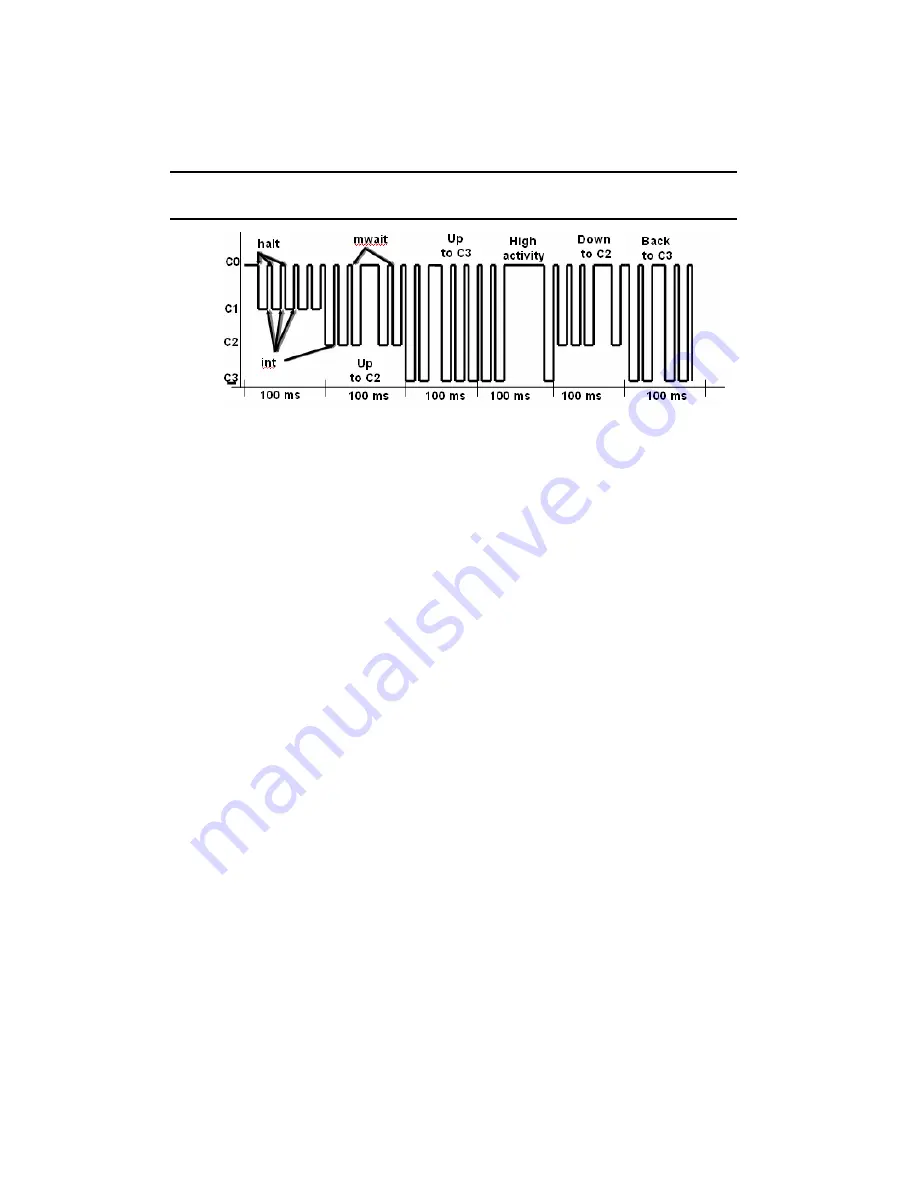
IA-32 Intel® Architecture Optimization
9-6
Figure 9-3
Application of C-states to Idle Time
Consider that a processor is in lowest frequency (LFM- low frequency
mode) and utilization is low. During the first time slice window (Figure
9-3 shows an example that uses 100 ms time slice for C-state decisions),
processor utilization is low and the OS decides to go to C2 for the next
time slice. After the second time slice, processor utilization is still low
and the OS decides to go into C3.
Processor-Specific C4 and Deep C4 States
The Pentium M, Intel Core Solo and Intel Core Duo processors
4
provide
additional processor-specific C-states (and associated sub C-states) that
can be mapped to ACPI C3 state type. The processor-specific C states
and sub C-states are accessible using MWAIT extensions (See CPUID
in
IA-32 Intel® Architecture Software Developer’s Manual, Volume 2A
).
One of the processor-specific state to reduce static power consumption
is referred to as C4 state. C4 provides power savings in the following
manner:
•
The voltage of the processor is reduced to the lowest possible level
that still allows the L2 cache to maintain its state.
4.
Pentium M processor can be detected by CPUID signature with family 6, model 9 or 13,
Intel Core Solo and Intel Core Duo processor has CPUID signature with family 6, model 14.
Summary of Contents for ARCHITECTURE IA-32
Page 1: ...IA 32 Intel Architecture Optimization Reference Manual Order Number 248966 013US April 2006...
Page 220: ...IA 32 Intel Architecture Optimization 3 40...
Page 434: ...IA 32 Intel Architecture Optimization 9 20...
Page 514: ...IA 32 Intel Architecture Optimization B 60...
Page 536: ...IA 32 Intel Architecture Optimization C 22...
















































